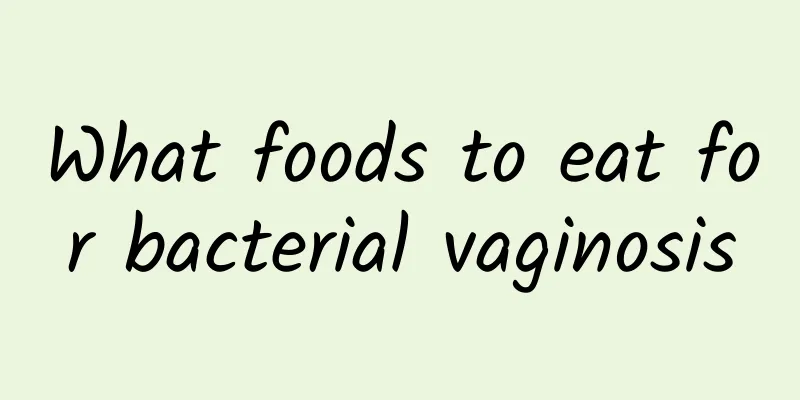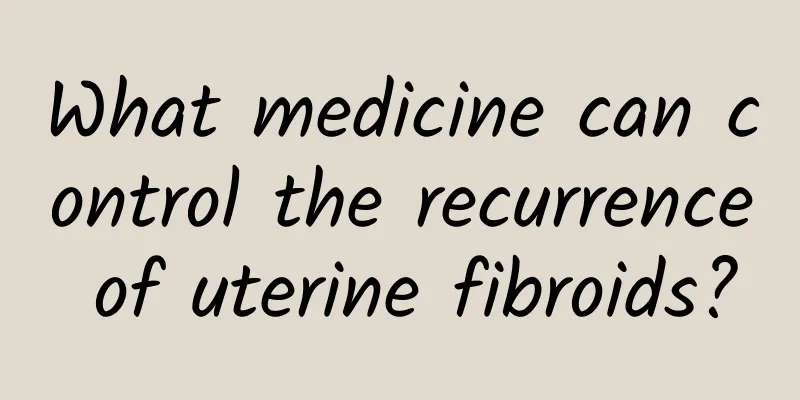What foods to eat for bacterial vaginosis

|
Bacterial vaginosis is a common gynecological disease. The main cause of this disease is bad hygiene habits. If you suffer from bacterial vaginosis and are undergoing treatment, some diets can also assist in the treatment of fungi. Here are some methods for your reference. It is understood that bacterial vaginosis is more common in women who have frequent sexual intercourse. The main manifestation of female bacterial vaginosis is an increase in grayish-white vaginal discharge, some of which are thin or paste-like, but there is also a small amount of foam. Vaginal discharge smells bad, especially after sexual intercourse or menstruation. Female bacterial vaginosis is mainly caused by bacterial infection. Staphylococcus, Streptococcus and Escherichia coli are common pathogens that can cause female bacterial vaginitis. Pathogen infection is one of the common causes of bacterial vaginitis in women. Bacterial vaginitis can also be caused by vaginal damage, such as vaginal plugs, gauze and other items left in the vagina, causing vaginal damage and inflammation. In addition, some women infected with bacterial vaginitis are caused by other diseases, such as chronic pelvic inflammatory disease, cervicitis, vaginitis, etc. If not treated in time, it may lead to bacterial vaginitis. These factors should not be ignored. Through the description of the causes of bacterial vaginitis, I hope women can pay attention to it. Vaginitis is very harmful. Women must actively treat it after suffering from this disease. Foods suitable for bacterial vaginosis: 1. Patients with bacterial vaginosis generally need to eat light food, mainly high in protein and low in fat. 2. If you have itching, you should eat amaranth, cabbage, mustard greens, taro, kelp, seaweed, chicken blood, snake meat, and pangolin. 3. Eat more vegetables and fruits, such as bananas, sweet potatoes, celery, etc. 4. If the amount of leucorrhea increases, you can eat more foods such as leeks, lentils, millet, tofu, lotus seeds, walnuts, and ginkgo nuts. 5. Drink more yogurt, especially that containing active Lactobacillus acidophilus, which can eliminate harmful yeast-like fungi. 6. It is advisable to eat more foods rich in vitamin B, such as wheat, sorghum, water chestnut, honey, tofu, chicken, etc.; it is advisable to eat more fruits and fresh vegetables. 7. It is better to eat soft and light food. You can choose foods that nourish the spleen and kidneys, such as polished round-grained rice, glutinous rice, yam, lentils, lotus seeds, coix seeds, lily, red dates, longan meat, chestnuts, black sesame seeds, black soybeans, clam meat, walnut kernels, animal liver, eggs, etc. |
<<: To effectively prevent vaginitis, fairies should do these things well
>>: How can we fight against bacterial vaginosis?
Recommend
These are all manifestations of the dangers of uterine fibroids.
Uterine fibroids are very common in life, and man...
How to treat ectopic pregnancy to relieve pain
Vaginal bleeding is one of the more common sympto...
Are uterine fibroids serious?
Uterine fibroids are a type of uterine fibroids t...
Just 10 minutes a day! Try these 5 bodyweight exercises at home to keep fit without any fitness equipment
Fitness is difficult, the gym is far away, member...
Dare not eat anything to lose weight? Health experts: Choose the right food and eat three meals a day to lose weight
Are you on a diet but still have the wrong idea o...
How to deal with the overwhelming pressure of epidemic prevention? 5 minutes of aerobic exercise every day can help relieve anxiety and depression symptoms
During the epidemic, many office workers work fro...
Experts remind: Uterine fibroids are very harmful to women
For patients with uterine fibroids, they should f...
There are methods to regulate abnormal leucorrhea
Abnormal vaginal discharge can be improved throug...
Diarrhea caused 2 cup sizes to fall off? TCM: Too exaggerated
The weather is cold in winter, and many people li...
What should women eat during menopause with irregular menstruation?
Irregular menstruation is one of the symptoms of ...
Ji Peihui teaches how to lose weight with elastic bands! 2 actions to do easily
Ji Peihui loves sports. When she is not working, ...
It’s easy to lose weight in winter, and these five types of food can improve your metabolism! Nutritionist Zheng Xiuqing: Eating the right nutrients is the best
I often hear women over 40 sighing that they have...
What examinations are needed for habitual miscarriage?
Habitual miscarriage can cause serious harm to wo...
How to prevent and treat vulvar leukoplakia
There is still no good explanation for the cause ...
What medicine should I take to treat cervical erosion?
Cervical erosion usually requires treatment with ...









